Karen Raugust discovers how developers are investing in 3D mobile gaming, and positioning for success once consumer demand takes off.
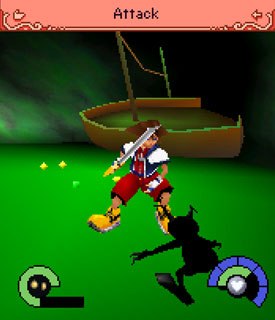
3D games comprise a relatively tiny part of the still-small mobile gaming market. But a number of factors -- such as improving technology, significant investments by software companies and early signs of consumer satisfaction -- predict fast growth for this segment in the coming years.
Total cell phone game revenues are expected to reach $353 million in 2006 (when 69% of people will have game-capable phones), up from $278 million in 2005, according to JupiterResearch, which forecasts revenues of $556 million by 2010.
Michel Kripalani, senior games industry manager at Autodesk, which creates tools for mobile game developers, says the company's customers currently generate about 95% of their mobile game sales from 2D titles and 5% from 3D, according to informal straw polling. He believes that ratio will probably be reversed within four to five years. "There aren't a lot of phones with 3D chips yet," he says. "It's just on the super, super high-end phones."
In terms of technology and graphics, phones with 3D chipsets are at about PlayStation 1 level when it comes to polygon performance and textures, Kripalani reports. He notes that mobile is catching up fast to PC and console games, even as the latter continue to improve. "The delta between the two is compressing," he adds.
Stan Liu, vp of product development at Walt Disney Internet Group Domestic Wireless, expects the next-generation of phones, coming within the year, to have much improved graphics quality, comparable to or exceeding the PSP. He notes, however, that carriers currently are not unlocking the 3D capability that is available on many handsets. (Disney's Domestic Wireless group includes mDisney, which develops Disney-branded mobile games, and Starwave, which distributes third-party titles.)
Investment in 3D
Many developers, including mDisney, are investing in 3D mobile games, despite the significant resources and time required, compared to 2D, and despite the small current market. "We want to be a leader in 3D," Liu says. "We support our signature brands with 3D product." He points out that Kingdom Hearts, co-developed with Square, was one of the first 3D action-adventures on mobile. Other 3D games from mDisney include The Incredibles, developed by Superscape and featuring more than 20 in-game cinematics, and The Chronicles of Narnia, a role-playing game developed by Fathammer.
Square also developed Dirge of Cerberus, an action 3D game based on the Final Fantasy franchise. It is available exclusively on Amp'd Mobile, a carrier and mobile content provider targeting youth and young professionals that is available on advanced (3G/broadband/EVDO) handsets. The game, developed using Ideaworks3D's Segundo technology, features advanced graphics and gameplay that includes intuitive target systems, a realtime frame rate and high-quality backgrounds, according to Amp'd and Square.

Gameloft, which creates licensed and proprietary games for Java, BREW and Symbian-equipped mobile handsets, launched Vijay Singh Pro Golf 3D on Sony Ericsson's P990 smartphone and M600 messaging device, both of which include the OpenGL ES application programming interface (API). Using OpenGL, developers can code more directly to the processor, so the frame rate and polygon numbers are higher than with operating systems such as BREW or Symbian. That makes the game both higher-definition and faster, according to Gonzague de Vallois, Gameloft's vp publishing. "There's a real 'wow' effect," he says. "Our business needs this kind of wow effect to show we're moving forward and not standing still."
"3D is a real step forward in terms of the user experience," de Vallois continues, comparing 3D vs. 2D mobile to color vs. black-and-white TV. "Once you've tried 3D you don't want to step back to 2D." This holds true not just for the action games that almost demand 3D, he says, but for casual games as well.
Early results seem to show that consumers who have sampled 3D games are satisfied with them, which suggests strong future demand. "We already see the take-up on 3D games and the repeat purchase rate are much higher than for 2D," de Vallois contends. "It will be a real driver of our business." He points out that gamers have been playing 3D titles on consoles for almost a decade and expect 3D graphics no matter what the platform. "It's natural, and it's compulsory to move the market forward."
3D Distribution
Among U.S. carriers, Verizon, with its V CAST service, has been a leader in distributing 3D games. "A good chunk of the business is 3D for them," notes de Vallois, who reports that Gameloft has been providing 3D titles for V CAST since the service launched. Cingular, T-Mobile and Sprint also are offering some 3D games for specific handsets.
de Vallois emphasizes the importance of marketing to drive the gaming industry in the future. He believes 3D-enabled demos, embedded in the phones, would encourage purchases, since consumers could sample new games in all their glory. Innovative new content, such as 3D games, he adds, is a way for consumers to justify the purchase of a new phone.
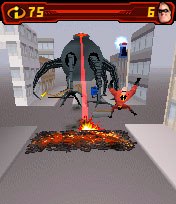
The Amp'd Mobile service offers a wide variety of games, including 3D, multiplayer and casual. Of the top 10 games at any given time across its three handsets (15 to 20 titles are typically listed on the deck), about three to four are 3D, according to Paul Nakayama, senior director of content programming. Some of the 3D-quality offerings on Amp'd, in addition to Dirge of Cerberus, include Resident Evil, Brothers in Arms and Tony Hawk's American Wasteland.
Nakayama points out that mobile users who play games seem to be avid. "Gaming isn't a once-a-day thing," he says. During tournaments -- a period of time during which gamers can earn rewards by pitting their performance against others' -- the company sees dozens of postings from the same players.
Currently, the easiest way for consumers to purchase a game is through the carrier. But some distributors are offering mobile titles online as well. These include Atom Ent.'s Shockwave.com, which offers 30 to 40 games (mostly 2D), for use with select Sprint, Cingular and T-Mobile handsets, from third-party distributors, including Glu Mobile, I-play, RealArcade and Hands-On Mobile. Consumers purchase the game online but the billing goes through the carrier.
"We hope that direct-to-consumer can play a big role," says Roy Sehgal, Atom Ent.'s vp of business and corporate development. "We have lots of consumer awareness and we can help the carriers."
Seghal believes current merchandising strategies are preventing purchases, however. Most offerings are presented in a linear structure where a consumer goes to a portal and looks at a list of games. The purchase decision is essentially driven only by the name of the title, which favors familiar branded and ported games, and the price. In addition, off-deck sales can be complicated, with several steps involved in the process, each serving as a drop-off point where consumers can opt to discontinue. The development of an Amazon-style one-click purchasing structure would help drive sales, Sehgal believes.
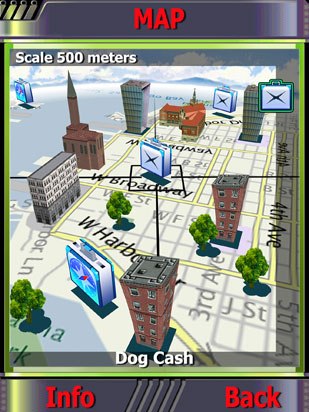
A Unique Platform
The limitations of the mobile phone as a gaming device -- no joystick, small keypad, tiny screen, shorter periods of game play, etc. -- means that games have to be created from scratch for that device, even if they are based on an existing console or PC game.
"It's a casual gaming device more than a serious gaming device," says Liu. "We have to design to its strengths and be aware of its differences." Games offering five to 10 minutes of play, which are controlled by a single button, are more appropriate than complicated set-ups, at least for now.
"Phones aren't designed for you to hold the phone and punch the keypad for eight hours straight," agrees Kripalani. "There's still a lot of talk about porting from one device to another, without figuring out the new language yet." He compares the transition to that from stage plays to film. At first, filmmakers simply recorded a play as it was performed; it took a while for them to figure out the unique language of film.
"We want to avoid the stripping down of console games," adds de Vallois of Gameloft, who notes that a person who has 10 minutes to play needs some sort of quick reward, like the ability to move to a higher level within five to eight minutes.
While much is made of the limitations of mobile, the platform also offers unique advantages, and game developers are experimenting with ways to incorporate these.
One benefit is that mobile allows gamers to play on the go, to keep them involved in a franchise between console sessions. A mobile game could feature a different style of play than the console version, for example, but achievements on the mobile could earn the user points that would carry over to the console. "The most successful games will be those that use the mobile phone as an extension of the main game," Kripalani suggests.
A connection between the two platforms can spur purchases of the mobile version. The Dirge of Cerberus mobile game relates to the PS2 version of that title by continuing the storyline, with the mobile version revealing a chapter that's missing from the console game. That means players have to purchase the mobile game to find out what the storyline is.
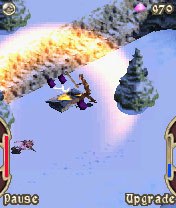
The networking and communications functions of the phone are another unique trait. "Mobile is a different animal altogether than a GameBoy or PSP. On mobile, you're always connected," Liu comments. "The mobile phone is the only device that's with us at all times. I could leave my house without my wallet and I wouldn't feel as bad as if I left without my phone." That opens up opportunities for games that incorporate e-mail, text messaging, live chat or web surfing. Some developers are experimenting with using other phone functions as well, such as voice recognition or the camera. "All that is on the horizon," Liu predicts.
Another area of exploration is GPS technology. "When I'm on the Xbox, no one knows where I am, and I'm not moving," says Kripalani. But with a mobile phone, the user's location could be part of the game play.
Developer TikGames created two GPS mobile titles using Autodesk's 3ds Max and Maya, plus the Location Services Developer Program and LocationLogic from Autodesk's Location Based Services division. Two titles, GeoUniverse Mobile, a treasure hunt game, and Jewel Chaser Mobile, a sleuthing game, feature 3D maps and use GPS data to incorporate the user's spatial location into the game play. Both work on gpsOne-enabled phones.
Mobile phones' all-the-time connectivity lends itself to real-time 2D and 3D multiplayer games, such as Gameloft's Asphalt, which is live on V CAST, Glu Mobile's World Series of Poker or Namco's Pool Pro Online. One current barrier to true multiplayer gaming, however, is that most are limited to one service and/or a few handsets, which reduces the number of potential competitors. "A bigger pool is always more interesting to the gamer," says Nakayama, who cautions that there are still technical issues preventing true realtime play.
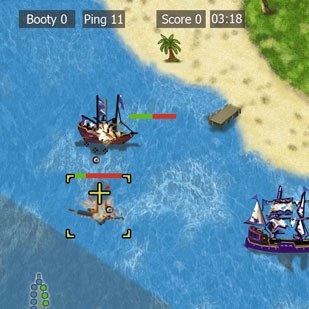
Some multiplayer games are cross-carrier to some degree. mDisney's Pirates of the Caribbean Multiplayer, a casual ship-to-ship battle game developed by Floodgate Ent., allows up to 16 players simultaneously in realtime. Currently offered on Verizon only, it will become available on Sprint and Cingular in the spring, and players will be able to compete with users on any of those services. Liu points out that there are still network-related challenges when it comes to cross-carrier games, but if market demand grows, the infrastructure will be built up to better support such titles.
If the same mobile games worked universally on all services and handsets, it would certainly help to propel the market forward. Currently, games have to be developed for each service and handset, all of which have different specifications. Disney, for example, creates each of its games for all carriers and for as many handsets as possible. At last count, Liu says, there were something like 850 handsets in North America alone. The need to develop multiple games is particularly burdensome in the 3D segment, where the cost of development is higher than in 2D.
Kripalani points out that a game maker needs to develop somewhere around 60 to 100 SKUs of each game to cover a basic number of services and handsets worldwide, which is an expensive proposition, especially for 3D. "There's a point where it becomes financially not viable," he says. "The math starts to get upside down."
For console and PC games that are ported to the mobile platform, it is theoretically possible to share assets to some degree, thereby reducing costs (both for universal and handset-specific games). Developers use the same software packages, including Maya and 3ds Max, no matter what the platform. And the potential for asset sharing will increase as mobile technology becomes more sophisticated.
But, because of the unique nature of the mobile platform, the ability to cross-utilize assets is not a big issue. The type of game that lends itself to the mobile environment is so different from that for a console or PC environment that the ability to share assets may remain a moot point, even as mobile technology evolves.
Two Market Niches
Many observers believe that, no matter how sophisticated mobile hardware and software become, there will always be casual mobile gamers who are happy with 2D arcade classics and casual games. Shockwave.com is targeting this segment of the market with its new Shockwave Minis initiative on Verizon. Created with Adobe Flash Lite and Qualcomm's BREW, the games -- about 30 to start, with two more added each month -- are available to consumers for a monthly subscription fee of $3.49. Each takes a couple of minutes and require just one key to play.
"There will always be a market for a Flash-style game," Sehgal says, pointing out that while computers, with their huge processing power, can accommodate sophisticated 3D games, many users choose to play casual Flash games anyway. He believes the mobile market will split into two niches: hard-core gamers who want a high-end 3D experience that mimics the PS2, and a larger, casual audience that will be happy with simple 2D titles.
One unanswered question is whether a significant number of consumers will ever view their phone as gaming devices. Developers and carriers continue to introduce new 3D games and devices in the hope that they will.
Karen Raugust is a Minneapolis-based freelance business writer specializing in animation, publishing, licensing and art. She is the author of The Licensing Business Handbook (EPM Communications).







